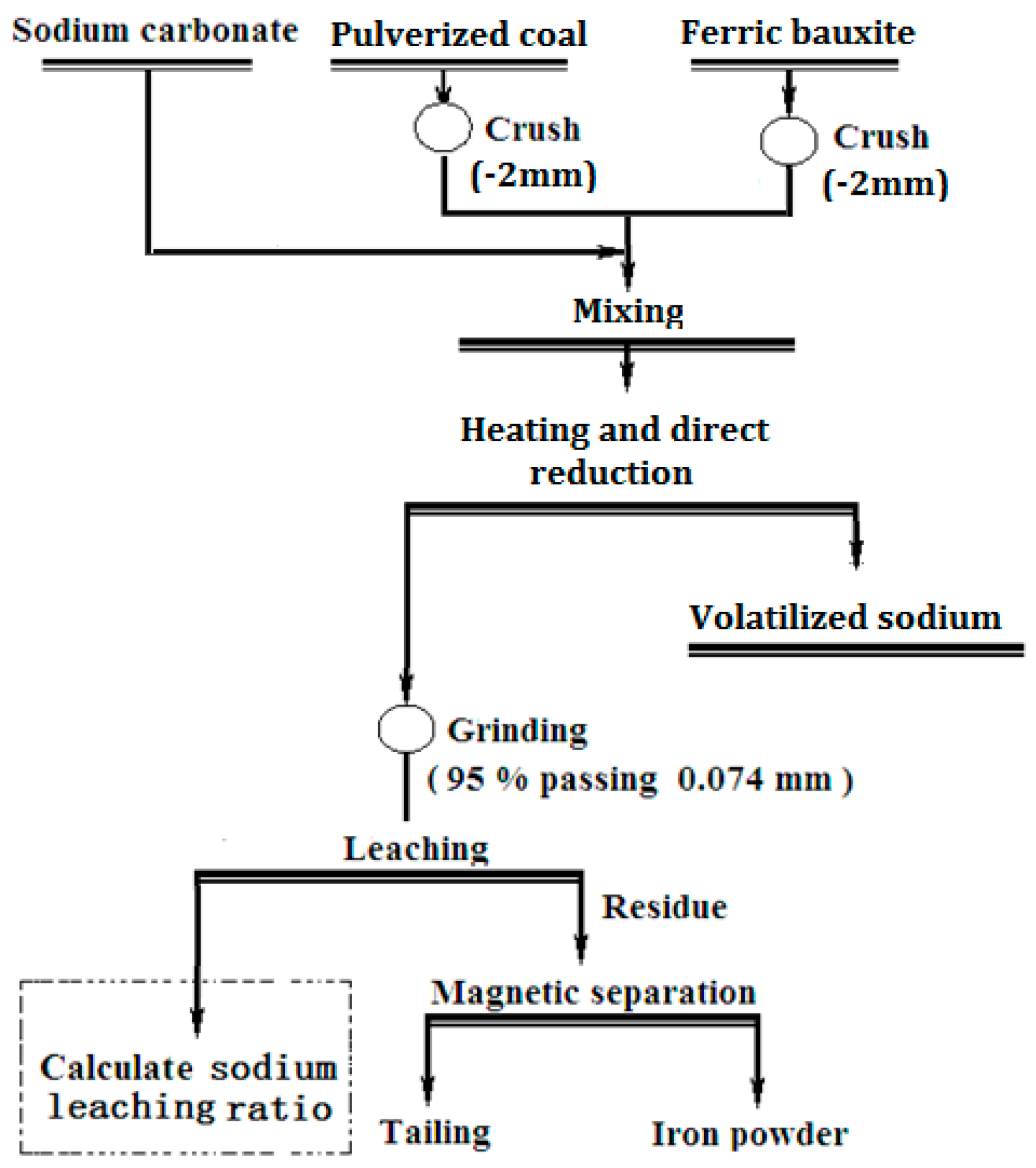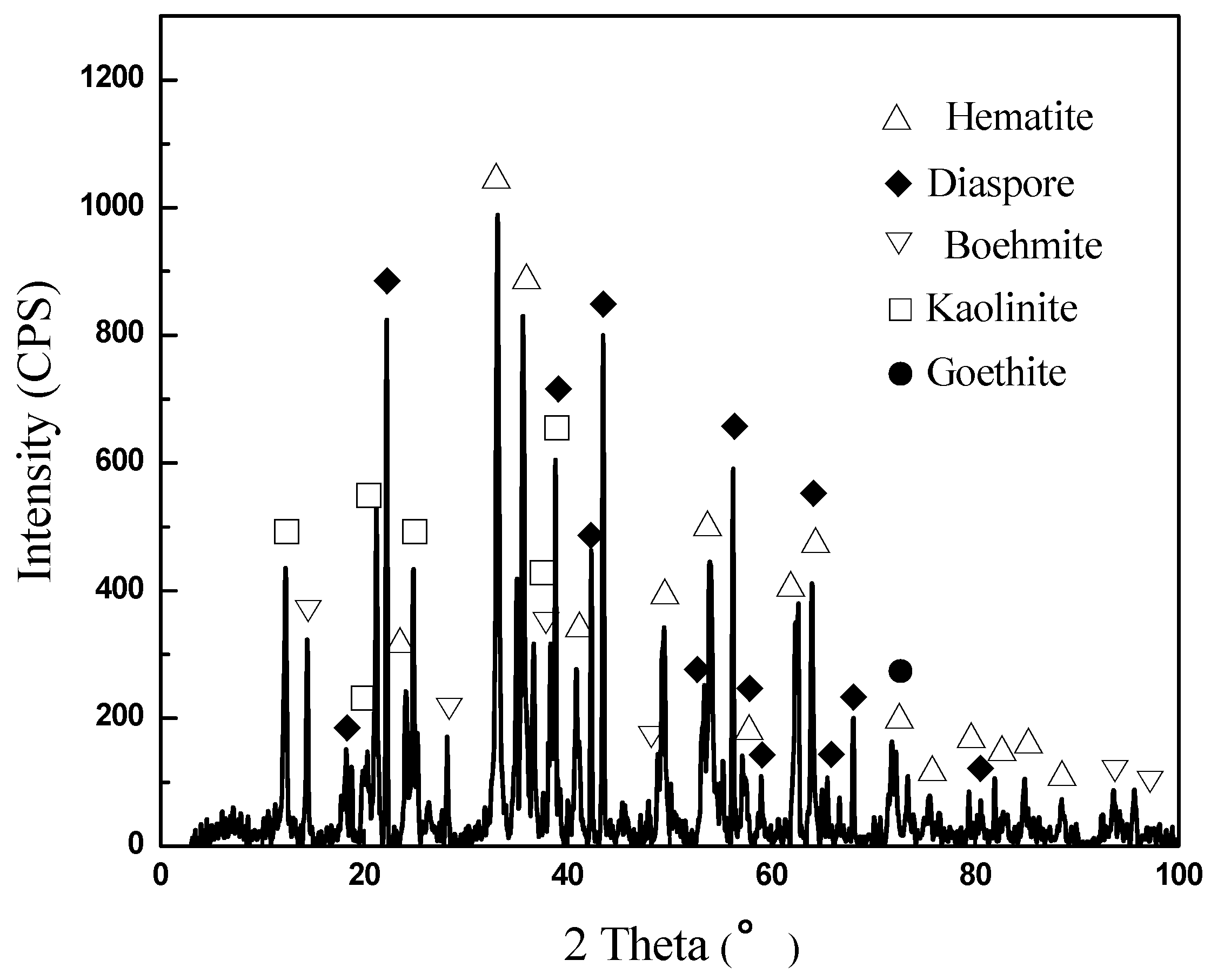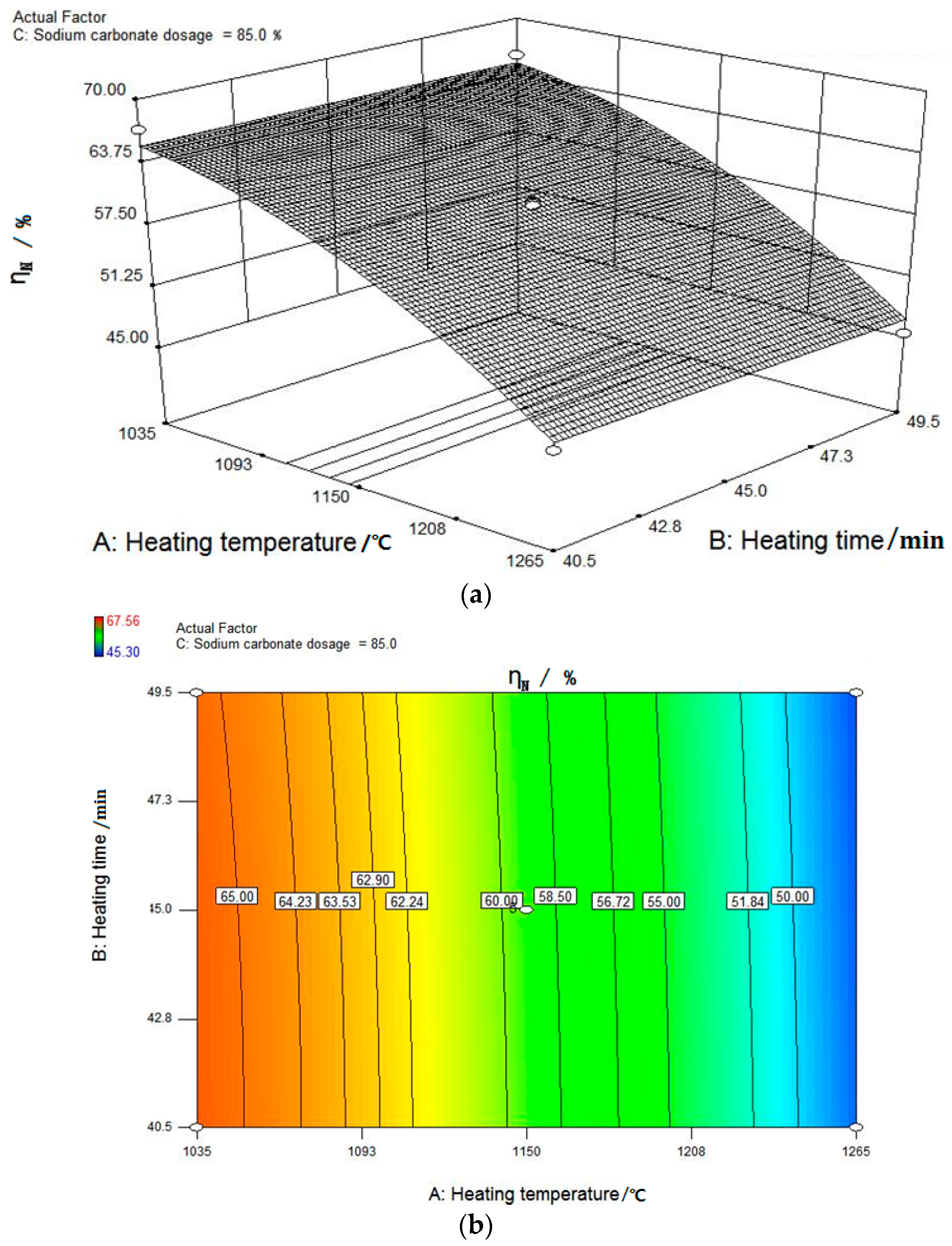2.1. Experimental Methods
The experimental instruments employed in this investigation include a rod mill (Hengcheng, XMB-70, Ganzhou, China), an electric box furnace (INCH, SX2-10-13, Changsha, China), an electronic balance (Mettler, AR1140, Changzhou, China), a vacuum filter (Hengcheng, XTLZ, Ganzhou, China), a magnetic separator (Yihao, CXG-99, Tangshan, China), and an electrothermal constant-temperature dry box (Shuangxu, PH050, Shanghai, China).
The Chemical compositions of the ore and product were analyzed by an atomic absorption spectrophotometer (Rayleigh, UV-9600, Beijing, China). The mineral composition of ore was examined by an X-ray diffractometer, XRD (Rigaku, TTRIII, Tokyo, Japan). The morphology and chemical composition of micro zone in samples were determined using a scanning electron microscope equipped with an energy dispersive spectrometer, SEM-EDS (ZEISS, EVO 18, Jena, Germany).
The chemical and mineral compositions of ferric bauxite were examined by atomic absorption spectrophotometer and XRD, respectively. The microstructure and chemical composition were tested by SEM-EDS.
In the experiments, ore, sodium carbonate, and coal were crushed to 100% passing 2 mm, and then mixed. The mixing ratio of ore and coal was 1:0.25, whereas the amount of sodium carbonate was varied. In each unit experiment, 41 g of the mixed materials was transferred to a lidded 100 mL graphite clay crucible. The crucible was then placed in a muffle furnace with an uncontrolled gaseous atmosphere at 1100 to 1150 °C. A distance of more than 3 cm was left between the crucible lid and the powder mixture in the crucible to prevent them from making contact with each other. After cooling, the material was ground to 100% passing 74 μm at the grinding density of 50%, and then leached under the conditions of water–solid ratio of 15:1, leaching temperature of 75 °C, and leaching time of 0.5 h. Sodium leaching ratio (
ηN) was then calculated from Equation (1):
ηN, sodium leaching ratio, %;
cN, sodium concentration of lixivium, g/L;
Vol, volume of lixivium, L;
M, mass of raw material mixture adopted in each unit experiment, g;
ωN, mass fraction of sodium carbonate in raw material mixture, %.
The leaching residues were transferred to magnetic separators, and the iron powder was isolated from tailing with a magnetic separation of 0.14 T. The entire flow chart adopted in the experiments is shown in
Figure 1, but only the sodium leaching part was investigated in this study.
2.2. Ore Characteristics
The ferric bauxite used was sampled from the Guangxi province of China. The chemical composition, SEM-EDS photos, and XRD image of the ferric bauxite adopted are presented in
Table 1 and
Figure 2 and
Figure 3, respectively.
Table 1 indicates that the iron and silicon dioxide of ferric bauxite are 28.79% and 12.22%, respectively.
Figure 2 shows five main crystalline mineral phases in raw ferric bauxite: hematite, boehmite, diaspore, kaolinite, and goethite.
Figure 3 reveals that the minerals in ferric bauxite are finely disseminated and symbiotic with one another, particularly the fine disseminated silicon-containing minerals distributed in hematite and diaspore grains (see points 5 and 6 in
Figure 3a). Ferric bauxite is characterized by the high contents of iron and silicon dioxide, as well as finely disseminated and symbiotic silicon-containing mineral.
Proximate analysis and inorganic composition data of coal are shown in
Table 2 and
Table 3, respectively.













